As urban dwellers, we understand the importance of greenery in our lives. With limited space in our apartments, we often miss out on the joys of gardening. However, a small balcony garden can change that. Not only does it add to the aesthetic appeal of your home, but it also provides you with fresh produce and a sense of satisfaction that comes with growing your own plants.
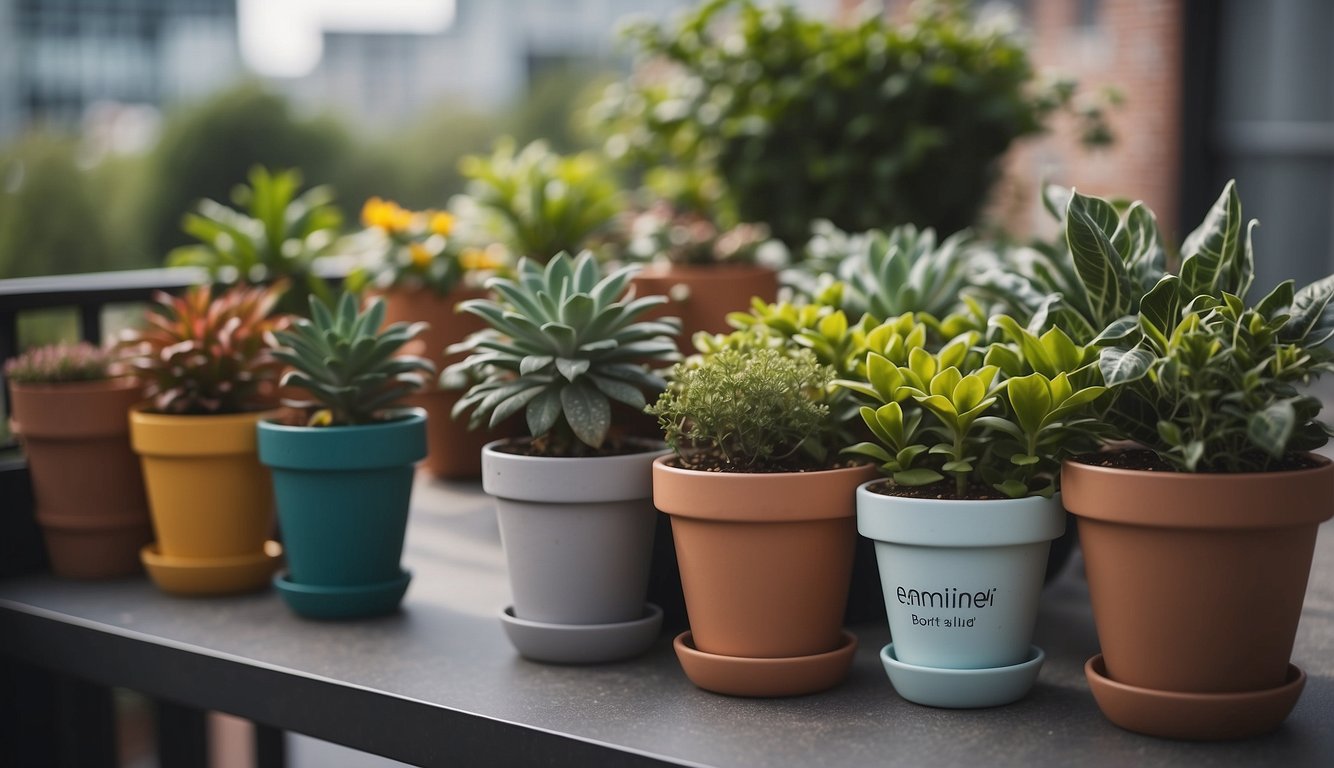
Planning your balcony garden in advance is crucial to ensure that it thrives throughout the year. With seasonal changes, it is important to choose plants that are suitable for the weather conditions. Maximizing space and light is also essential to ensure that your plants receive adequate sunlight and air circulation. Caring for your garden regularly and incorporating design and decor elements can elevate the look of your balcony garden.
Table of Contents
Key Takeaways
- Planning your balcony garden in advance is crucial to ensure that it thrives throughout the year.
- Choosing the right plants and containers, maximizing space and light, and regular maintenance are key to a successful balcony garden.
- Incorporating design and decor elements can elevate the look of your balcony garden and add to the aesthetic appeal of your home.
Planning Your Balcony Garden
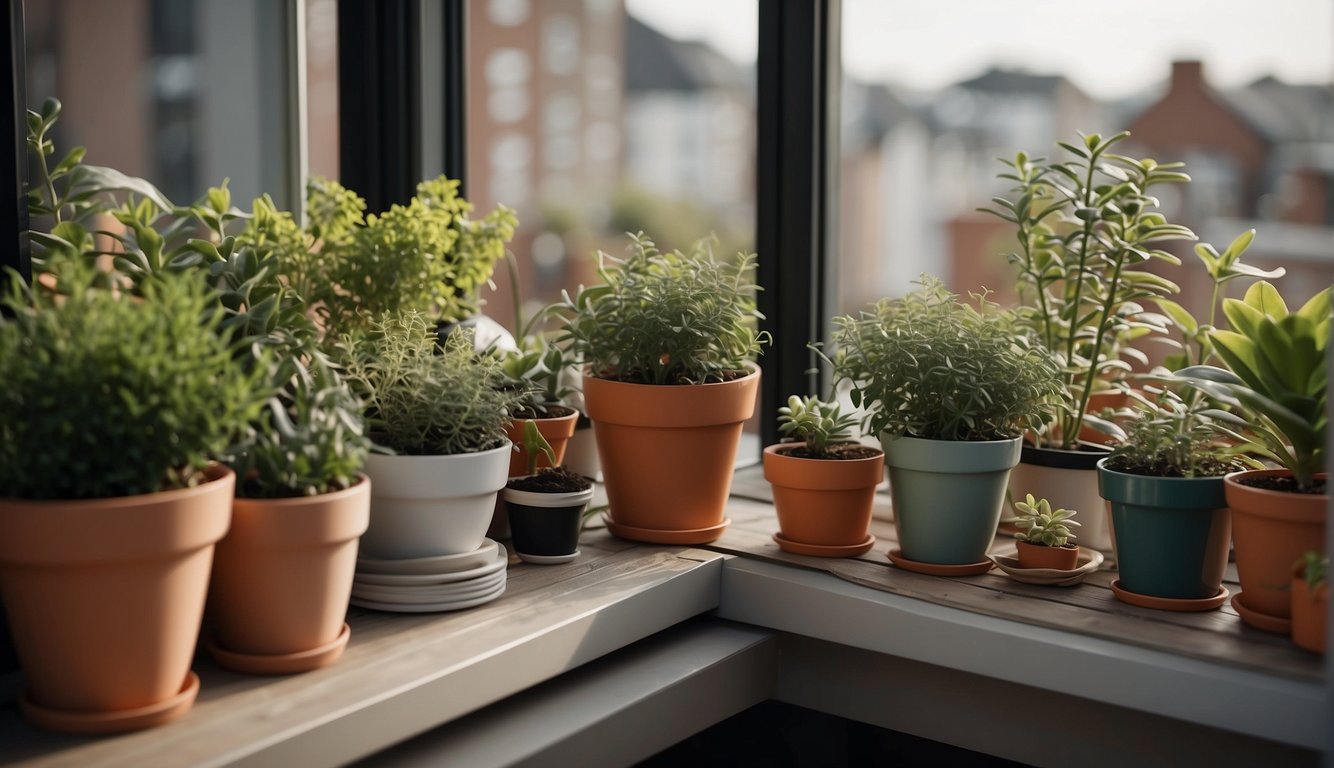
When it comes to balcony gardening, planning is key. Limited space, sunlight, and weight restrictions are just a few of the challenges that we need to consider. But with the right balcony garden ideas and design, we can create a beautiful and functional garden that thrives in our microclimate and hardiness zone.
First, let’s consider the space we have available. Measure your balcony and take note of any obstacles such as railings, air conditioning units, or neighboring buildings. This will help you determine what size containers you can use and how many plants you can fit.
Next, think about the amount of sunlight your balcony receives. Some plants require full sun, while others prefer partial shade. Take note of the direction your balcony faces and how many hours of sunlight it receives each day. This will help you choose the right plants for your balcony garden.
Weight restrictions are another important factor to consider. Balconies have weight limits, so it’s important to choose lightweight containers and potting soil. You can also consider using vertical gardening techniques to maximize your space without adding extra weight.
When it comes to balcony garden design, there are many options to choose from. You can create a theme, such as a herb garden or a butterfly garden, or mix and match plants for a more eclectic look. Consider using hanging baskets, trellises, or window boxes to add interest and variety to your balcony garden.
Finally, make sure to choose plants that are suitable for your microclimate and hardiness zone. This will ensure that your balcony garden thrives and produces beautiful blooms and tasty vegetables throughout the growing season.
With these tips in mind, we can create a balcony garden that is both beautiful and functional, and enjoy the benefits of gardening even in a limited space.
Choosing Plants and Containers
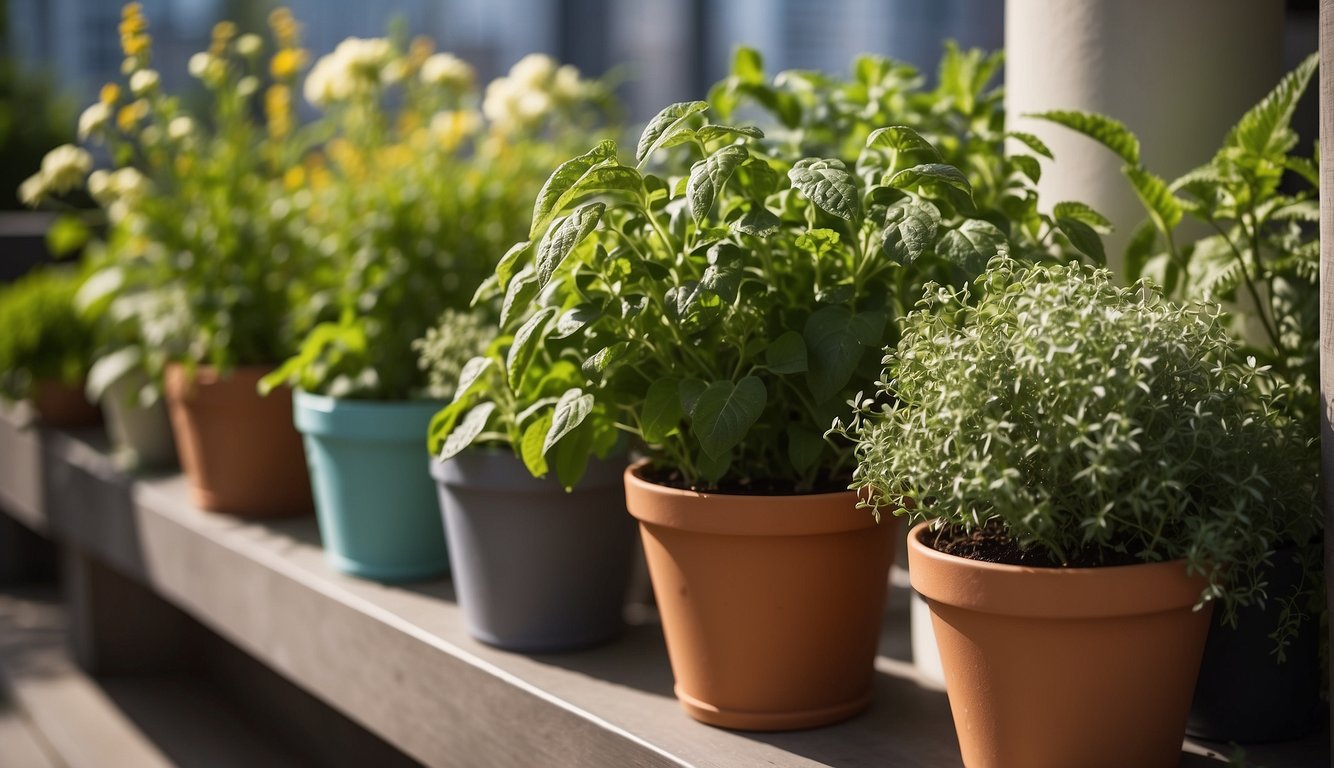
When planning a balcony garden, selecting the right plants and containers is crucial. We need to consider the space, sunlight, and climate of our balcony to determine the optimal conditions for plant growth.
Selecting Plants
We can choose from a wide variety of plants for our balcony garden, including herbs, flowers, vegetables, shrubs, trees, perennials, annuals, and succulents. It is important to consider the amount of sunlight our balcony receives when selecting plants, as some may require full sun while others thrive in partial shade. We can also choose plants based on the climate of our area.
When selecting plants, we should also consider their size and growth habits. For example, if we have limited space, we may want to choose plants that do not grow too tall or wide. We can also choose plants that are easy to maintain and do not require a lot of attention.
Container Options
Container gardening is an excellent option for balcony gardens, and we can choose from a variety of containers such as planters, hanging planters, railing planters, self-watering containers, and window boxes. We should consider the size and weight of the containers, as well as their drainage and watering requirements.
We can choose containers made from different materials such as plastic, ceramic, metal, or wood. Each material has its own advantages and disadvantages, and we should choose the one that best suits our needs and preferences. For example, plastic containers are lightweight and easy to move, while ceramic containers are more durable and aesthetically pleasing.
Overall, selecting the right plants and containers is essential for a successful balcony garden. We should choose plants that thrive in the conditions of our balcony and containers that are functional and aesthetically pleasing.
Maximizing Space and Light
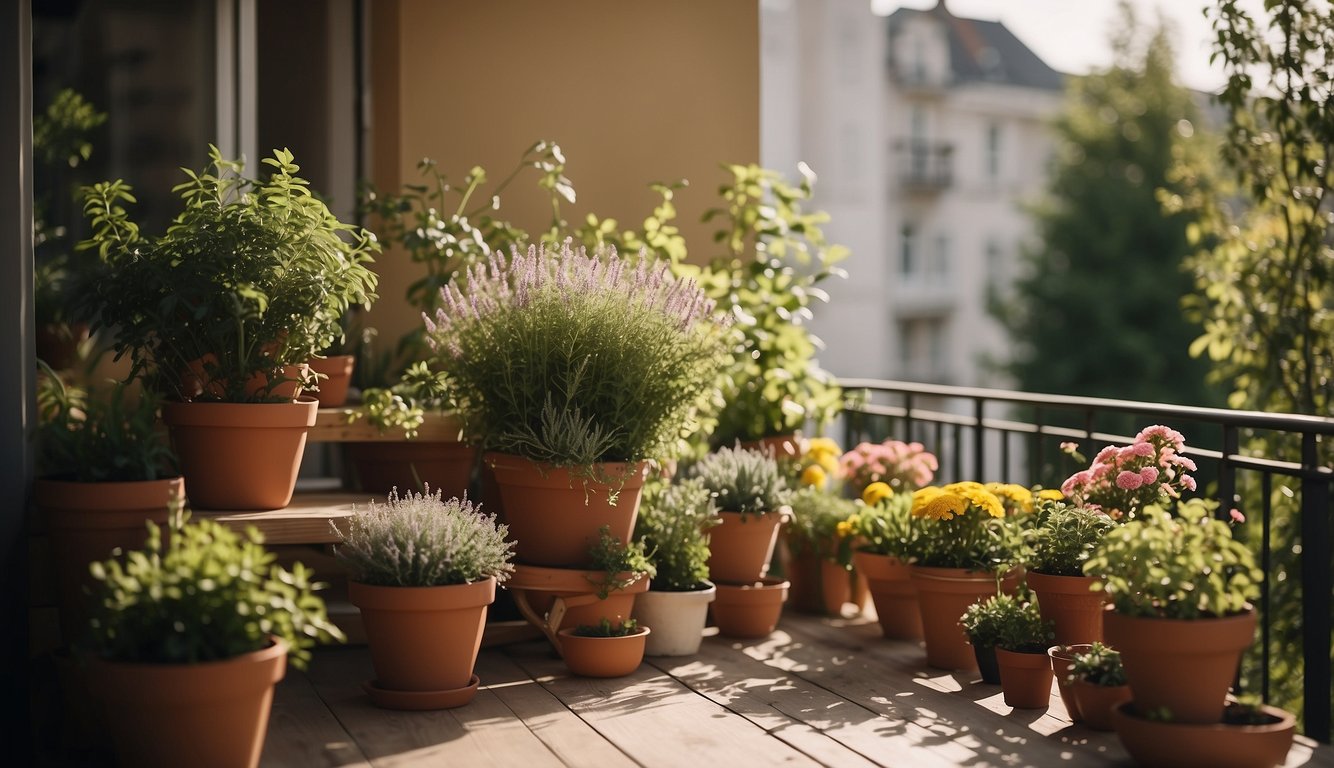
When planning a balcony garden, maximizing space and light is essential. We want to make the most of every inch of our small balcony while ensuring that our plants get enough sunlight. Here are some tips on how to maximize space and light in your balcony garden.
Vertical and Hanging Solutions
One of the best ways to maximize space in a small balcony garden is to use vertical and hanging solutions. Hanging baskets are a great way to add some greenery to your balcony without taking up too much floor space. You can also use climbing plants and trellises to create a vertical garden. Vertical planters are another option that allows you to grow plants in a small space while also adding some visual interest to your balcony.
Light Management
Sun exposure is critical for the growth of most plants. When planning your balcony garden, it’s essential to consider the amount of sunlight your plants will receive. If your balcony gets full sun, you can grow sun-loving plants like tomatoes, peppers, and herbs. If your balcony gets partial shade, you can grow plants like lettuce, spinach, and other leafy greens.
It’s also essential to manage the amount of light your plants receive. Some plants require more shade than others, so it’s essential to choose the right plants for your balcony’s light conditions. You can also use shading devices like umbrellas or shade cloth to protect your plants from too much direct sunlight.
In conclusion, maximizing space and light is crucial when planning a balcony garden. Vertical and hanging solutions can help you make the most of your small balcony, while proper light management ensures that your plants thrive.
Caring for Your Garden
When it comes to balcony garden seasonal planning, caring for your garden is crucial. Proper care ensures that your plants grow strong and healthy, giving you the best possible yield. Here are some tips to help you care for your balcony garden:
Watering and Nutrition
Regular watering is essential to keep your plants healthy. We recommend using a watering can to control the amount of water you give to each plant. Proper watering also depends on the moisture levels of your soil, so make sure to monitor it regularly. Fertilization is also important to provide your plants with the nutrients they need to grow. We suggest using a balanced, water-soluble fertilizer every 4-6 weeks during the growing season.
Dealing with Pests and Weather
Pests and weather conditions can be a problem for your balcony garden. To prevent pests, we suggest using organic pest control methods such as companion planting and natural sprays. Wind exposure can also be an issue, so make sure to protect your plants from strong winds by placing them in a sheltered area. Rain can also be a problem, so make sure to cover your plants during heavy rain to prevent damage. Mulching can also help retain moisture and protect your plants from extreme weather conditions.
Overall, proper care is crucial for the success of your balcony garden. By following these tips, you can ensure that your plants grow strong and healthy, giving you a bountiful harvest.
Design and Decor
When it comes to designing and decorating your balcony garden, there are a few things to consider. First, think about privacy. You may want to add some plants or screens to create a more secluded space. This can be especially important if you live in a busy city or have neighbors close by.
Next, consider your furniture. Balcony gardens are often small, so you’ll want to choose pieces that are both functional and space-saving. A small table and chairs can be a great addition to a balcony garden, as can a seating area with comfortable cushions or chairs.
When it comes to the balcony floor, you may want to add some outdoor rugs or mats to create a more welcoming space. This can also help to protect your balcony from any damage caused by plant pots or other items.
Decor items can also be a great way to add some personality to your balcony garden. Consider adding some colorful planters, lanterns, or wind chimes to create a relaxing and inviting atmosphere.
Finally, it’s important to consider your budget when designing and decorating your balcony garden. There are plenty of budget-friendly options available, such as DIY planters and recycled furniture. With a little creativity, you can create a beautiful and functional space without breaking the bank.
Conclusion

In conclusion, planning a balcony garden according to the seasons is a smart way to maximize your space and yield a bountiful harvest of homegrown produce. We have learned that with the right planning, anyone can create a thriving garden in even the smallest urban space.
By choosing the right plants for each season, we can ensure that our garden stays healthy and productive year-round. We can create a therapeutic space that not only benefits our mental health but also provides us with fresh, nutritious produce.
We have discovered that seasonal planning involves understanding the unique needs of each plant, such as sunlight, water, and soil requirements. By rotating crops, trimming, and renewing the soil, we can keep our plants healthy and active throughout the year.
It’s important to consider the weight constraints of our balcony and choose containers and furniture that are both functional and space-saving. We can transform our balcony garden into a functional and inviting space by incorporating furniture and accessories such as foldable or stackable chairs and tables.
In summary, seasonal planning for a balcony garden requires careful consideration of the unique needs of each plant, the weight constraints of our balcony, and the furniture and accessories we choose to incorporate. With the right planning and attention, we can create a flourishing garden that not only beautifies our urban area but also provides us with fresh produce and therapeutic benefits.
Frequently Asked Questions
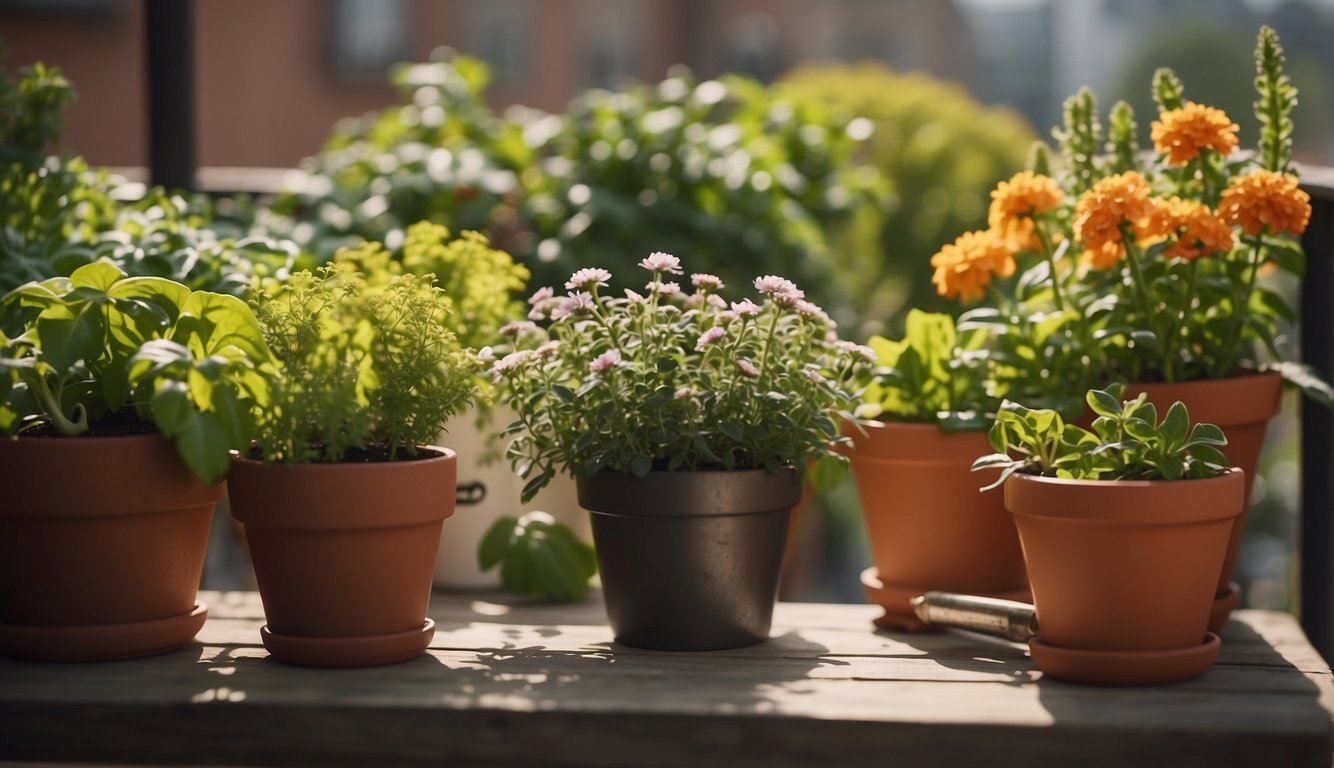
What are the best plants for a balcony garden in different seasons?
Choosing the right plants for your balcony garden is essential for a successful harvest. In the spring, consider planting cool-weather crops such as lettuce, spinach, and peas. In the summer, opt for heat-tolerant plants such as tomatoes, peppers, and herbs like basil, rosemary, and thyme. Fall is a great time to grow root vegetables such as carrots, beets, and radishes. During the winter, focus on growing cold-hardy greens such as kale, collards, and chard.
How do you protect balcony garden plants during extreme weather conditions?
Extreme weather conditions such as high winds, heavy rain, and scorching heat can damage your balcony garden plants. To protect your plants during these conditions, consider using shade cloth to protect them from the sun, windbreaks to shield them from strong winds, and covers to protect them from heavy rain.
What is the ideal layout for a seasonal balcony garden?
The ideal layout for a seasonal balcony garden depends on the size and shape of your balcony. Consider using vertical space by hanging plants from the ceiling or using a trellis for climbing plants. Use containers of varying sizes to create depth and interest, and group plants with similar watering and sunlight needs together.
How can one maximize space in a small balcony garden throughout the year?
Maximizing space in a small balcony garden requires careful planning and organization. Consider using hanging baskets, stacking containers, and tiered shelving to create vertical space. Use compact varieties of plants and herbs, and consider growing plants that can be trained to grow vertically, such as tomatoes and cucumbers.
Which vegetables and herbs are ideal for year-round balcony gardening?
Some vegetables and herbs that are ideal for year-round balcony gardening include lettuce, spinach, kale, chard, and other cold-hardy greens. Herbs such as basil, rosemary, thyme, and oregano can also be grown year-round on a balcony.
How should a balcony garden be prepared for the upcoming season?
Preparing a balcony garden for the upcoming season involves cleaning and organizing the space, assessing the condition of the soil and containers, and selecting the appropriate plants for the season. Remove any dead plants or debris from the previous season, and replace any damaged or worn containers. Amend the soil with compost or other organic matter, and choose plants that are appropriate for the upcoming season.


